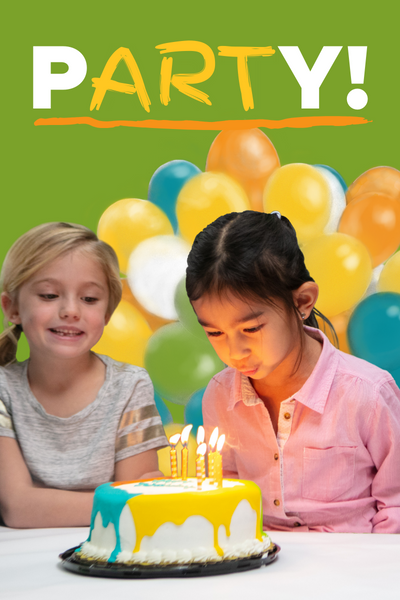STEM and Art: Combining Creativity and Critical Thinking for Kids in Wilmington, MA
STEAM: Art Meets Traditional Education
STEAM is an educational philosophy that mixes the foundational elements of STEM (science, technology, engineering, and math) and adds a powerful fifth element: art.
Adding art to STEM education creates a holistic learning experience for children. Where STEM focuses on important elements of education through critical thinking and problem-solving skills, STEAM supports creative thinking, idea exploration, and a dynamic learning environment.
STEAM helps children develop well-rounded cognitive abilities by nurturing critical and creative thinking. In this blog, we’ll explore the importance of integrating art into STEM and offer fun, hands-on STEM art activities you can do with your children at home.
The Power of Art in STEAM Education
When children are given space to learn about art and creation, they are encouraged to take a creative approach to other subjects. Here’s how STEAM will benefit your child:
- Creative Problem-Solving: Art introduces children to different ways of thinking, encouraging flexibility and innovation. Traditional STEM work exercises logical thinking but doesn’t offer the opportunity to incorporate creative elements like drawing, designing, or brainstorming to solve problems.
- Experimentation: Experimenting requires creativity, a skill that can be developed. When children are encouraged to incorporate creative thinking into their schoolwork, they become more willing to experiment, take risks, engage with materials in new ways, and learn through trial and error.
- Design Thinking: The arts naturally teach design thinking, a creative process used by architects, engineers, and inventors. Through a STEAM approach, kids learn to imagine, prototype, test, and refine their ideas.
The Cognitive Benefits of Combining STEM and Art
STEAM education is a holistic approach to learning that helps children make meaningful connections across subjects. As they explore different areas, they begin to synthesize their knowledge and apply it in new ways.
Here’s how else it helps develop a child’s learning abilities:
- Building Logical and Creative Thinking Skills: STEM subjects provide structure through rules, formulas, and order, while STEAM integrates artistic expression, freedom, and ingenuity. STEAM helps children see patterns, connections, and big-picture ideas in school subjects.
- Understanding the Scientific Process through Art: Art-based projects support STEM learning by encouraging experimentation, problem-solving, and learning from trial and error—skills linked to higher cognitive development.
- Collaboration and Communication Skills: STEAM projects are often team-oriented, requiring kids to share their thoughts, build on each other’s ideas, and work together. These interpersonal skills help children grow into well-rounded adults.
Fun STEAM Activities for Kids to Try at Home
You don’t need fancy tools or a science lab to implement STEAM at home, just imagination and a few household materials! Here are three easy, engaging STEAM projects to do at home:
Building Bridges with Craft Supplies
What you’ll need: Popsicle sticks, string, glue, tape, and small weights (like coins or magnets)
Learning Goals: Structural engineering, spatial reasoning, trial and error
Step-by-step guide:
- Before starting, consider what kind of bridge you want to build. Is it long and flat? Arched? Suspended? Sketch the design on paper.
- Tape or glue popsicle sticks together to create the foundation of the bridge. Overlap the sticks for added strength.
- Use additional popsicle sticks to create vertical or diagonal supports beneath the bridge's walkway. These supports function as trusses and assist in weight distribution. Consider forming triangles with the sticks, as triangles are a strong shape in engineering! Remember to cut the popsicle sticks to the right length.
- It’s time to create the walkway, the flat surface that connects one side of the bridge to the other. Start by laying several popsicle sticks side by side, lining them up evenly to form a flat surface, and connecting them with glue or tape. For extra strength, add another layer of popsicle sticks underneath, running in the opposite direction to make a crisscross pattern. This reinforces the walkway and helps prevent it from bending when you add weight later.
- Check the strength of your bridge. Gently place small weights on different parts of the bridge. Start with one, then add more.
- If the bridge collapses (or sags), that’s part of the learning! Think about what could be improved and try again.
String Art Geometry
What you’ll need: Cardboard, push pins, yarn or string, marker
Learning Goals: Shape recognition, symmetry, fine motor development, creative design
Step-by-step guide:
- Start by choosing a simple geometric shape, such as a triangle, square, circle, or hexagon. Draw the shape in the center of your cardboard using a marker or pencil. Older kids can try drawing multiple, more complex shapes or a grid for more complicated designs!
- Place push pins along the lines of the shape. The more pins you use, the more detailed your design will be. Keep the pushpins symmetrical on each side of the shape.
- Choose a color of yarn or string and securely tie one end around one of the pins.
- Now comes the fun part! Begin stretching the string across the cardboard and wrapping it around the pins. You can cross the shape, go around the edges, or crisscross through the middle to make a web. Keep the string taut but not so tight that it bends the pins.
- Once you’re happy with the design, tie off the end of the string and trim any excess. Don’t forget to display your finished product!
Marble Run
What you’ll need: Cardboard tubes, tape, scissors, marbles
Learning Goals: Engineering, physics (gravity & momentum), problem-solving, imagination
Step-by-step guide:
- Before you start, imagine your marble run. Will it twist and turn? Have jumps? Where will it start and end? Sketch your design on paper.
- To create ramps, cut your cardboard tubes in half lengthwise. You can also cut smaller pieces for vertical drops, tunnels, or curves.
- Tape your first tube near the top of a wall or a large cardboard base to mark the starting point. Then, connect additional tubes with tape, sloping downward so gravity pulls the marble along the path. Each piece should overlap the last to keep the marble from falling out.
- Get creative by adding funnels for drops, switchbacks to zigzag tubes, and jumps with small gaps for the marble to go across.
- Once your run is complete, drop in a marble and watch it go! Observe the marble’s path to see if any improvements can be made. You may need to reinforce areas with more tape, adjust the angle of the slope, or do a complete rework of certain sections.
Enjoy STEAM Projects With Kidcreate Studios
Opting for STEAM learning instead of STEM develops critical thinking and creative problem-solving in kids. When kids are given the space to tinker, experiment, and imagine, they learn in lasting ways. Doing STEM art activities at home can reinforce these skills, making learning more memorable.
Kidcreate Studios in Wilmington, MA uses play-based learning, hands-on discovery, and creative exploration in our programs for children to flourish. Visit your local center or browse our class schedule for workshops designed to inspire the next generation of thinkers and artists!
Kidcreate Studio Newsletter
Classes, studio news, and special offers.

